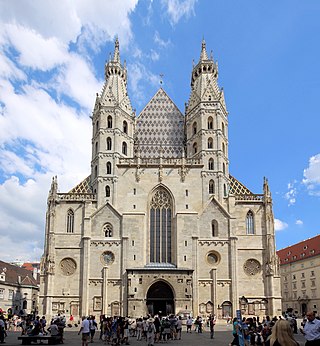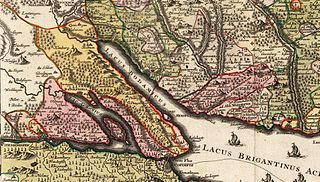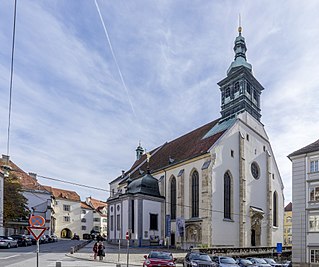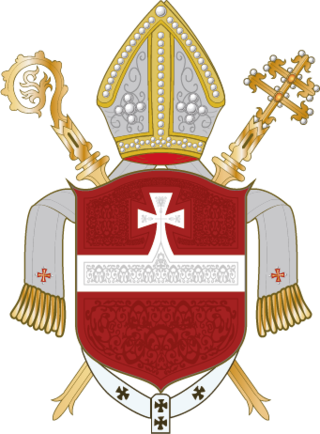
The former Roman Catholic Diocese of Wiener Neustadt in Lower Austria existed from 1469 to 1785. In 1990, it was re-established as a titular see which is held by the bishop for the Military Services in Austria.

The former Roman Catholic Diocese of Wiener Neustadt in Lower Austria existed from 1469 to 1785. In 1990, it was re-established as a titular see which is held by the bishop for the Military Services in Austria.

Upon the request of the Emperor Frederick III, the diocese was created by Pope Paul II on 14 January 1469, and was immediately subject to the Holy See. At first it was coterminous with the town of Wiener Neustadt.
In 1769 the new parish of Theresienfeld was added and in 1784 its territory was extended from Wiener-Neustadt to the boundary of Styria. On 21 April 1785, the see was incorporated in the Archdiocese of Vienna by Emperor Joseph II. Its last bishop, Johann Heinrich von Kerens, S.J. (1775–1785), and his cathedral chapter were transferred to the newly erected Diocese of Sankt Pölten.

The Late-Romanesque Dom or cathedral was consecrated in 1279 and remained the cathedral from 1469 to 1785. The choir stalls and transept, in Gothic style, are from the 14th century. In the late 15th century 12 statues of the Apostles were added in the apse, while the bust of Cardinal Melchior Klesl is attributed to Gian Lorenzo Bernini.




Wiener Neustadt is a city located in the Steinfeld south of Vienna, in the state of Lower Austria, in northeast Austria. It is a self-governed city and the seat of the district administration of Wiener Neustadt-Land District. The city is the site of one of the world's oldest military academies, the Theresian Military Academy, which was established by Empress Maria Theresa of Austria in 1751 to train officers for the Austrian army.

Melchior Klesl was an Austrian statesman and cardinal of the Roman Catholic Church during the time of the Counter-Reformation. He was minister-favourite of King and Emperor Matthias (1609-1618) and a leading advocate for peace between the empire's different confessional leagues before the Thirty Years' War.

The Diocese of Chur is a Latin Church ecclesiastical territory or diocese of the Catholic Church in Switzerland. It extends over the Swiss Cantons of Graubünden (Grisons), Schwyz, Glarus, Zurich, Nidwalden, Obwalden, and Uri.

The Diocese of Lavant was a suffragan bishopric of the Archdiocese of Salzburg, established in 1228 in the Lavant Valley of Carinthia.

The Catholic Church in Austria is part of the worldwide Catholic Church in full communion with the Pope in Rome. The Church's governing body in Austria is the Austrian Conference of Catholic Bishops, made up of the hierarchy of the two archbishops, the bishops and the abbot of territorial abbey of Wettingen-Mehrerau. Nevertheless, each bishop is independent in his own diocese, answerable only to the Pope. The current president of the Conference of Catholic Bishops is Cardinal Christoph Schönborn. The Austrian church is the largest Christian Confession of Austria, with 4.73 million members in 2022.

The Prince-Bishopric of Constance was a small ecclesiastical principality of the Holy Roman Empire from the mid-12th century until its secularisation in 1802–1803. In his dual capacity as prince and as bishop, the prince-bishop also administered the Diocese of Konstanz, which existed from about 585 until its dissolution in 1821, and whose territory extended over an area much larger than the principality. It belonged to the ecclesiastical province of Mainz since 780/782.

The Diocese of Graz-Seckau is a Latin Church diocese of the Catholic Church comprising the Austrian state of Styria. It is part of the Ecclesiastical Province of Salzburg.

The Diocese of Linz is a Latin Church diocese of the Catholic Church. It is a suffragan of the Archdiocese of Vienna, Austria.
Bishops of the Wrocław Bishopric, Prince-Bishopric (1290–1918), and Archdiocese.

The Diocese of Sankt Pölten is a Latin Church diocese located in the city of Sankt Pölten in the ecclesiastical province of Wien in Austria.

The Archdiocese of Vienna is a Latin Church archdiocese of the Catholic Church in Austria. It was erected as the Diocese of Vienna on 18 January 1469 out of the Diocese of Passau, and elevated to an archdiocese on 1 June 1722. The episcopal see is situated in the cathedral of S. Stephen in Vienna.

Leopold Ernst von Firmian was an Austrian bishop and cardinal.

The Military Ordinariate of Austria is a Latin Church military ordinariate of the Catholic Church. Immediately exempt to the Holy See, it provides pastoral care to Catholics serving in the Austrian Armed Forces and their families.

Wiener Neustadt Cathedral, or the Cathedral of the Assumption of Mary and St. Rupert, is a Catholic church located in Wiener Neustadt, Austria. Now a parish church, it was previously the cathedral of the diocese of Wiener Neustadt between 1468 and 1785, the year of the suppression of the diocese.

The Order of Saint George is an Austrian chivalric order founded by the Habsburg emperor Frederick III and Pope Paul II in 1469. Established as a military order to advocate the Christian faith, its original implicite goal was to combat the Ottoman incursions into the Inner Austrian lands of Styria, Carinthia and Carniola. The order resided at Millstatt Abbey and in Wiener Neustadt, until in 1598 its properties were handed over to the Jesuit college in Graz.

The Ordinariate for Byzantine-Rite Catholics in Austria is a Catholic Ordinariate for Eastern Catholic faithful jointly for all Eastern Catholics of Byzantine Rite in the various languages of particular churches sui iuris in Austria.

The Archiepiscopal Seminary of Vienna, commonly referred to in German as the Wiener Priesterseminar, is a Roman Catholic major seminary that serves as the seminary of the Archdiocese of Vienna. Founded in 1758 by the Archbishop of Vienna, Christoph Anton Migazzi, the seminary moved to its current building, the Haus Boltzmanngasse, in 1914. Today, the rector is Rev. Richard Tatzreiter and enrollment is 35.

Sigismund von Kollonitsch; Kollonitz, Kollonic, Kollonics, Collonicz was titular Bishop of Scutari, Bishop of Waitzen, and was from 1716 to 1722 Prince-Bishop of Vienna, then from 1722 to 1751 the first Prince-Archbishop of Vienna. He was raised in 1727 to the cardinalate by Pope Benedict XIII.
Ernst Graf von Trautson, actually Ernst Trautson von Falkenstein zu Sprechenstein und Schroffenstein, was an Austrian Roman Catholic clergyman who was Prince-Bishop of Vienna from 1685 to 1702.